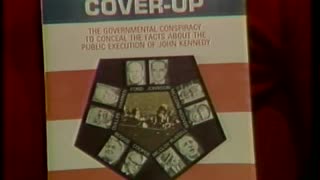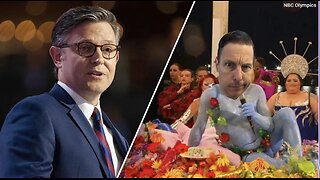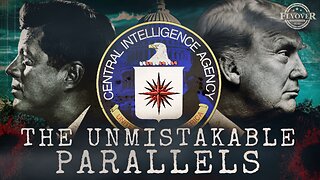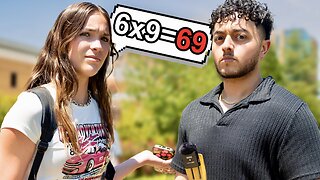The Ted Bundy Trials - Part 4 (July 25, 1979 to December 1979)
https://thememoryhole.substack.com/
Following a change of venue to Miami, Bundy stood trial for the Chi Omega homicides and assaults in June 1979.[242] The trial was covered by 250 reporters from five continents and was the first to be televised nationally in the United States.[243] Despite the presence of five court-appointed attorneys, Bundy again handled much of his own defense. From the beginning, he "sabotaged the entire defense effort out of spite, distrust, and grandiose delusion", Nelson later wrote. "Ted [was] facing murder charges, with a possible death sentence, and all that mattered to him apparently was that he be in charge."[244]
According to Mike Minerva, a Tallahassee public defender and member of the defense team, a pre-trial plea bargain was negotiated in which Bundy would plead guilty to killing Levy, Bowman, and Leach in exchange for a firm 75-year prison sentence. Prosecutors were amenable to a deal, by one account, because "prospects of losing at trial were very good."[245] Bundy, on the other hand, saw the plea deal not only as a means of avoiding the death penalty, but also as a "tactical move": he could enter his plea, then wait a few years for evidence to disintegrate or become lost and for witnesses to die, move on, or retract their testimony. Once the case against him had deteriorated beyond repair, he could file a post-conviction motion to set aside the plea and secure an acquittal.[246][247] At the last minute, however, Bundy refused the deal. "It made him realize he was going to have to stand up in front of the whole world and say he was guilty", Minerva said. "He just couldn't do it."[248]
Souviron is seen in the courtroom. Several enlargements of dental x-rays have been pinned up, and he is holding one in his hand.
Odontologist Richard Souviron explaining bite mark evidence at the Chi Omega trial
At trial, crucial testimony came from Chi Omega sorority members Connie Hastings, who placed Bundy in the vicinity of the sorority house that evening,[249] and Nita Neary, who saw him leaving the house clutching the murder weapon.[250][251] Incriminating physical evidence included impressions of the bite wounds Bundy had inflicted on Levy's left buttock, which forensic odontologists Richard Souviron and Lowell Levine matched to castings of Bundy's teeth.[252][253] The jury deliberated for less than seven hours before convicting Bundy on July 24, 1979, of the Bowman and Levy murders, three counts of attempted first-degree murder for the assaults on Kleiner, Chandler and Thomas and two counts of burglary. Trial judge Edward Cowart imposed death sentences for the murder convictions.[254][255]
Six months later, a second trial took place in Orlando for the abduction and murder of Leach.[256] Bundy was found guilty once again, after less than eight hours' deliberation, due principally to the testimony of an eyewitness who saw him leading Leach from the schoolyard to his stolen van.[257] Important material evidence included clothing fibers with an unusual manufacturing error, found in the van and on Leach's body, which matched fibers from the jacket Bundy was wearing when he was arrested.[258]
During the penalty phase of the Leach trial, Bundy took advantage of an obscure Florida law providing that a marriage declaration in court, in the presence of a judge, constituted a legal marriage. As he was questioning Boone—who had moved to Florida to be near Bundy, had testified on his behalf during both trials, and was again testifying on his behalf as a character witness—he asked her to marry him. She accepted, and Bundy declared to the court that they were legally married.[259][260]
On February 10, 1980, Bundy was sentenced for a third time to death by electrocution.[261] As the sentence was announced, he reportedly stood and shouted, "Tell the jury they were wrong!"[262] This third death sentence would be the one ultimately carried out nearly nine years later.[263] On October 24, 1982, Boone gave birth to a daughter, Rose Bundy.[264][265][266] While conjugal visits were not allowed at the Florida State Prison in Raiford, where Bundy was incarcerated, inmates were known to pool their money in order to bribe guards to allow them intimate time alone with their female visitors.[265][267]
Death row, confessions and execution
Shortly after the conclusion of the Leach trial and the beginning of the long appeals process that followed, Bundy initiated a series of interviews with Stephen Michaud and Hugh Aynesworth. Speaking mostly in third person to avoid "the stigma of confession", he began for the first time to divulge details of his crimes and thought processes.[268] Bundy recounted his career as a thief, confirming Kloepfer's long-time suspicion that he had shoplifted virtually everything of substance that he owned.[269] "The big payoff for me," he said, "was actually possessing whatever it was I had stolen. I really enjoyed having something ... that I had wanted and gone out and taken." Possession proved to be an important motive for rape and murder as well.[1] Sexual assault, he said, fulfilled his need to "totally possess" his victims.[270] At first, he killed his victims "as a matter of expediency ... to eliminate the possibility of [being] caught"; but later, murder became part of the "adventure". "The ultimate possession was, in fact, the taking of the life", he said. "And then ... the physical possession of the remains."[271]
Bundy also confided in Special Agent William Hagmaier of the FBI Behavioral Analysis Unit. Hagmaier was struck by the "deep, almost mystical satisfaction" that Bundy took in murder. "He said that after a while, murder is not just a crime of lust or violence", Hagmaier related. "It becomes possession. They are part of you ... [the victim] becomes a part of you, and you [two] are forever one ... and the grounds where you kill them or leave them become sacred to you, and you will always be drawn back to them." Bundy told Hagmaier that he considered himself to be an "amateur", an "impulsive" killer in his early years, before moving into what he termed his "prime" or "predator" phase at about the time of Healy's murder in 1974. This implied that he began killing well before 1974—although he never explicitly admitted having done so.[272]
An unsmiling Bundy faces the camera.
Mugshot taken three days after sentencing for the murder of Kimberly Leach
In July 1984, prison guards found two hacksaw blades hidden in Bundy's cell. A steel bar in one of the cell's windows had been sawed completely through at the top and bottom and glued back into place with a homemade soap-based adhesive.[273][274] Several months later, guards found an unauthorized mirror, and Bundy was moved to a different cell.[275] Shortly thereafter, he was charged with a disciplinary infraction for unauthorized correspondence with another high-profile criminal, John Hinckley Jr.[276]
In October 1984, Bundy contacted Keppel and offered to share his self-proclaimed expertise in serial killer psychology[275] in the ongoing hunt in Washington for the "Green River Killer", later identified as Gary Ridgway.[277] Keppel and Green River Task Force Detective Dave Reichert interviewed Bundy, but Ridgway remained at large for a further seventeen years.[278] Keppel published a detailed documentation of the Green River interviews,[279] and later collaborated with Michaud on another examination of the interview material.[280][281]
In early 1986, an execution date (March 4) was set on the Chi Omega convictions; the U.S. Supreme Court issued a brief stay, but the execution was quickly rescheduled.[282] In April, shortly after the new date (July 2) was announced, Bundy finally confessed to Hagmaier and Nelson what they believed was the full range of his depredations, including details of what he did to some of his victims after their deaths. He told them that he revisited Taylor Mountain, Issaquah, and other secondary crime scenes, often several times, to lie with his victims and perform sexual acts with their bodies until putrefaction forced him to stop. In some cases, he drove for several hours each way and remained the entire night.[161] In Utah, he applied makeup to Smith's lifeless face, and repeatedly washed Aime's hair. "If you've got time," he told Hagmaier, "they can be anything you want them to be."[147] He decapitated approximately twelve of his victims with a hacksaw,[46][283] and kept at least one group of severed heads—probably the four later found on Taylor Mountain (Rancourt, Parks, Ball and Healy)—in his apartment for a period of time before disposing of them.[284]
Less than fifteen hours before the scheduled July 2 execution, the Eleventh Circuit Court of Appeals stayed it indefinitely and remanded the Chi Omega case for review on multiple technicalities—including Bundy's mental competency to stand trial and an erroneous instruction by the trial judge during the penalty phase requiring the jury to break a 6–6 tie between life imprisonment and the death penalty[285]—which, ultimately, were never resolved.[286] A new date (November 18) was then set to carry out the Leach sentence; the Eleventh Circuit Court issued a stay on November 17.[286] In mid-1988, the Eleventh Circuit ruled against Bundy, and in December the Supreme Court denied a motion to review the ruling over the dissents of Justices Thurgood Marshall and William J. Brennan Jr.[287] Within hours of that final denial, a firm execution date of January 24, 1989, was announced.[288] Bundy's journey through the appeals courts had been unusually rapid for a capital murder case: "Contrary to popular belief, the courts moved Bundy as fast as they could ... Even the prosecutors acknowledged that Bundy's lawyers never employed delaying tactics. Though people everywhere seethed at the apparent delay in executing the archdemon, Ted Bundy was actually on the fast track."[289]
With all appeal avenues exhausted and no further motivation to deny his crimes, Bundy agreed to speak frankly with investigators. He confessed to Keppel that he had committed all eight of the Washington and Oregon homicides for which he was the prime suspect. He described three additional previously unknown victims in Washington and two in Oregon whom he declined to identify if indeed he ever knew their identities.[290] He said he left a fifth corpse—Manson's—on Taylor Mountain,[291] but incinerated her head in Kloepfer's fireplace.[292] "He described the Issaquah crime scene [where the bones of Ott, Naslund, and Hawkins were found], and it was almost like he was just there", Keppel said. "Like he was seeing everything. He was infatuated with the idea because he spent so much time there. He is just totally consumed with murder all the time."[293] Nelson's impressions were similar: "It was the absolute misogyny of his crimes that stunned me," she wrote, "his manifest rage against women. He had no compassion at all ... he was totally engrossed in the details. His murders were his life's accomplishments."[179]
Bundy confessed to detectives from Idaho, Utah, and Colorado that he had committed numerous additional homicides, including several that were unknown to the police. He explained that when he was in Utah he could bring his victims back to his apartment, "where he could reenact scenarios depicted on the covers of detective magazines."[46] A new ulterior strategy quickly became apparent: he withheld many details, hoping to parlay the incomplete information into yet another stay of execution. "There are other buried remains in Colorado", he admitted, but refused to elaborate.[294] The new strategy—immediately dubbed "Ted's bones-for-time scheme"—served only to deepen the resolve of authorities to see Bundy executed on schedule, and yielded little new detailed information.[295] In cases where he did give details, nothing was found.[296] Colorado Detective Matt Lindvall interpreted this as a conflict between his desire to postpone his execution by divulging information and his need to remain in "total possession—the only person who knew his victims' true resting places."[297]
When it became clear that no further stays would be forthcoming from the courts, Bundy supporters began lobbying for the only remaining option, executive clemency. Diana Weiner, a young Florida attorney and Bundy's last purported love interest,[298] asked the families of several Colorado and Utah victims to petition Florida Governor Bob Martinez for a postponement to give Bundy time to reveal more information.[299] All refused.[300] "The families already believed that the victims were dead and that Ted had killed them", wrote Nelson. "They didn't need his confession."[301] Martinez made it clear that he would not agree to further delays in any case. "We are not going to have the system manipulated", he told reporters. "For him to be negotiating for his life over the bodies of victims is despicable."[302]
Boone had championed Bundy's innocence throughout all of his trials and felt "deeply betrayed" by his admission that he was, in fact, guilty. She moved back to Washington with her daughter and refused to accept his phone call on the morning of his execution. "She was hurt by his relationship with Diana [Weiner]," Nelson wrote, "and devastated by his sudden wholesale confessions in his last days."[303] Hagmaier was present during Bundy's final interviews with investigators. On the eve of his execution, he talked of suicide. "He did not want to give the state the satisfaction of watching him die", Hagmaier said.[248]
Bundy was executed in the Raiford electric chair at 7:16 a.m. EST on Tuesday, January 24, 1989. His last words were directed at his attorney Jim Coleman and Methodist minister Fred Lawrence: "Jim and Fred, I'd like you to give my love to my family and friends."[304] Hundreds of revelers sang, danced and set off fireworks in a pasture across from the prison as the execution was carried out,[305][306] then cheered as the white hearse containing Bundy's corpse departed the prison.[307] He was cremated in Gainesville,[308] and his ashes scattered at an undisclosed location in the Cascade Range of Washington State, in accordance with his will.[309][310]
Modus operandi and victim profiles
Bundy was an unusually organized and calculating criminal who used his extensive knowledge of law enforcement methodologies to elude identification and capture for years.[311] His crime scenes were distributed over large geographic areas; his victim count had risen to at least 20 before it became clear that numerous investigators in widely disparate jurisdictions were hunting the same man.[312] Bundy's assault methods of choice were blunt trauma and strangulation, two relatively silent techniques that could be accomplished with common household items.[313] He deliberately avoided firearms due to the noise they made and the ballistic evidence they left behind.[314] He was a "meticulous researcher" who explored his surroundings in minute detail, looking for safe sites to seize and dispose of victims.[315] He was unusually skilled at minimizing physical evidence.[79] His fingerprints were never found at a crime scene, nor any other incontrovertible evidence of his guilt, a fact he repeated often during the years in which he attempted to maintain his innocence.[316]
Bundy is seen from the side. He is wearing a tweed jacket and has his hand positioned near his chin.
Bundy in a Miami courtroom in 1979
Other significant obstacles for law enforcement were Bundy's generic, essentially anonymous physical features,[317] and a curious chameleon-like ability to change his appearance.[318] Early on, police complained of the futility of showing his photograph to witnesses; he looked different in virtually every photo ever taken of him.[319] In person, "his expression would so change his whole appearance that there were moments that you weren't even sure you were looking at the same person", said Stewart Hanson Jr., the judge in the DaRonch trial. "He [was] really a changeling."[320] Bundy was well aware of this unusual quality and he exploited it, using subtle modifications of facial hair or hairstyle to significantly alter his appearance as necessary.[321] He concealed his one distinctive identifying mark, a dark mole on his neck, with turtleneck shirts and sweaters.[322] Even his Volkswagen Beetle proved difficult to pin down; its color was variously described by witnesses as metallic or non-metallic, tan or bronze, light brown or dark brown.[323]
Bundy's modus operandi evolved in organization and sophistication over time, as is typical of serial killers, according to FBI experts.[46] Early on, it consisted of forcible late-night entry followed by a violent attack with a blunt weapon on a sleeping victim.[324] As his methodology evolved, he became progressively more organized in his choice of victims and crime scenes. He would employ various ruses designed to lure his victim to the vicinity of his vehicle where he had pre-positioned a weapon, usually a crowbar. In many cases he wore a plaster cast on one leg or a sling on one arm, and sometimes hobbled on crutches, then requested assistance in carrying something to his vehicle. Bundy was regarded as handsome and charismatic, traits he exploited to win the confidence of his victims and the people around him in his daily life.[118][325][326] "Ted lured females", Michaud wrote, "the way a lifeless silk flower can dupe a honey bee."[327] He would sometimes approach females pretending to be an authority figure or firefighter.[328]
Once Bundy had them near or inside his vehicle, he would overpower and bludgeon them, and then restrain them with handcuffs. He would then transport them to a pre-selected secondary site, often a considerable distance away, and rape them during ligature strangulation.[46][122][329] In the case of his Utah victims, the secondary site would be his apartment building.[46] Toward the end of his spree, in Florida, perhaps under the stress of being a fugitive, he regressed to indiscriminate attacks on sleeping women.[329] While he is often said to have been a torturer, and biographer Ann Rule in particular regarded him as a "sadistic sociopath" who took pleasure in human suffering,[7] Bundy disputed these claims in one of his conversations with Michaud, insisting that he never deliberately tortured any of those he killed and that the murders had no sadistic focus on enjoyment derived from the infliction of pain and injury. To the contrary, he claimed that he went out of his way to mitigate his victims' physical torment.[330] Though he also told Hagmaier that he would pose his victims to recreate detective magazine covers.[46][122]
At secondary sites Bundy would remove and later burn the victim's clothing,[331] or in at least one case (Cunningham's) deposit them in a Goodwill Industries collection bin.[332] He explained that the clothing removal was ritualistic, but also a practical matter, as it minimized the chance of leaving trace evidence at the crime scene that could implicate him.[331] A manufacturing error in fibers from his own clothing, ironically, provided a crucial incriminating link to the Leach killing.[333] He often revisited his secondary crime scenes to engage in acts of necrophilia,[334] and to groom or dress up the cadavers.[335] Some victims were found wearing articles of clothing they had never worn, or nail polish that family members had never seen.[336] Bundy took Polaroid photos of many of his victims. "When you work hard to do something right," he told Hagmaier, "you don't want to forget it."[147] Consumption of large quantities of alcohol was an "essential component", he told both Keppel and Michaud; he needed to be "extremely drunk" while on the prowl[337][338] in order to "significantly diminish" his inhibitions and to "sedate" the "dominant personality" that he feared might prevent his inner "entity" from acting on his impulses.[339]
All of Bundy's known victims were white females, most of middle-class backgrounds. Almost all were between the ages of 15 and 25 and most were college students. He apparently never approached anyone he might have met before.[311] In their last conversation before his execution, Bundy told Kloepfer he had purposely stayed away from her "when he felt the power of his sickness building in him."[340] Rule noted that most of the identified victims had long straight hair, parted in the middle—like Diane Edwards, the woman who rejected him, and to whom he later became engaged and then rejected in return. Rule speculated that Bundy's animosity toward his first girlfriend triggered his protracted rampage and caused him to target victims who resembled her.[341] Bundy dismissed this hypothesis: "[T]hey ... just fit the general criteria of being young and attractive", he told Aynesworth. "Too many people have bought this crap that all the girls were similar ... [but] almost everything was dissimilar ... physically, they were almost all different."[342] He did concede that youth and beauty were "absolutely indispensable criteria" in his choice of victims.[343]
After Bundy's execution, Rule was surprised and troubled to hear from numerous "sensitive, intelligent, kind young women" who wrote or called to say they were deeply depressed because Bundy was dead. Many had corresponded with him, "each believing that she was his only one". Several said they suffered nervous breakdowns when he died. "Even in death, Ted damaged women," Rule wrote. "To get well, they must realize that they were conned by the master con-man. They are grieving for a shadow man that never existed."[344]
-
 58:21
58:21
The Memory Hole
5 days agoThe JFK Assassination Conspiracy: Part I - Exploring the Puzzle of Players and Theories (1989)
5251 -
 LIVE
LIVE
Graham Allen
2 hours agoSecret Service DESTROYED In Congress! Hamas Leader Is DEAD!+ Kamala Is Going For A TKO!
9,077 watching -
 LIVE
LIVE
Matt Kohrs
9 hours agoBuckle Up! MASSIVE Market Swings Incoming!!! || The MK Show
1,355 watching -
 26:28
26:28
BonginoReport
3 hours agoClimate Cult Leaves Olympians Overheated And Hungry (Ep.11) - 07/31/24
15.8K28 -
 DVR
DVR
The Podcast of the Lotus Eaters
5 hours agoThe Podcast of the Lotus Eaters #968
11.1K6 -
 1:35:43
1:35:43
Game On!
13 hours agoEagles out for REVENGE! Ready for a Super Bowl run this season!
7.19K4 -
 LIVE
LIVE
jeffahern
1 hour agoNever Woke Wednesday with Jeff Ahern ( The Cult of Woke)
527 watching -
 52:25
52:25
Flyover Conservatives
1 day agoTHE UNMISTAKABLE PARALLELS: Kennedy Assassination vs Trump Assassination Attempt - Roger Stone | FOC Show
25.1K17 -
 10:15
10:15
KeroNgb
13 hours agoDUMB NPC Students CANNOT Answer EXTREMELY Simple Questions!
8.15K18 -
 1:17:27
1:17:27
Dexerto League of Legends
22 hours agoLEC Final Review! The REAL Reason G2 Is Better! Does Fnatic Need a NEW Roster?!
11.4K